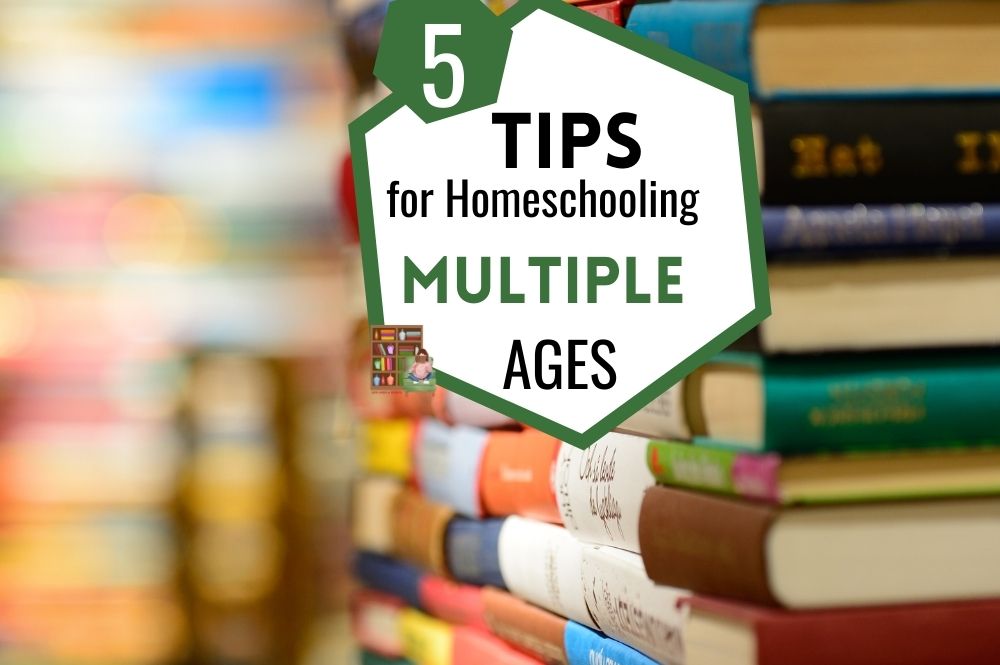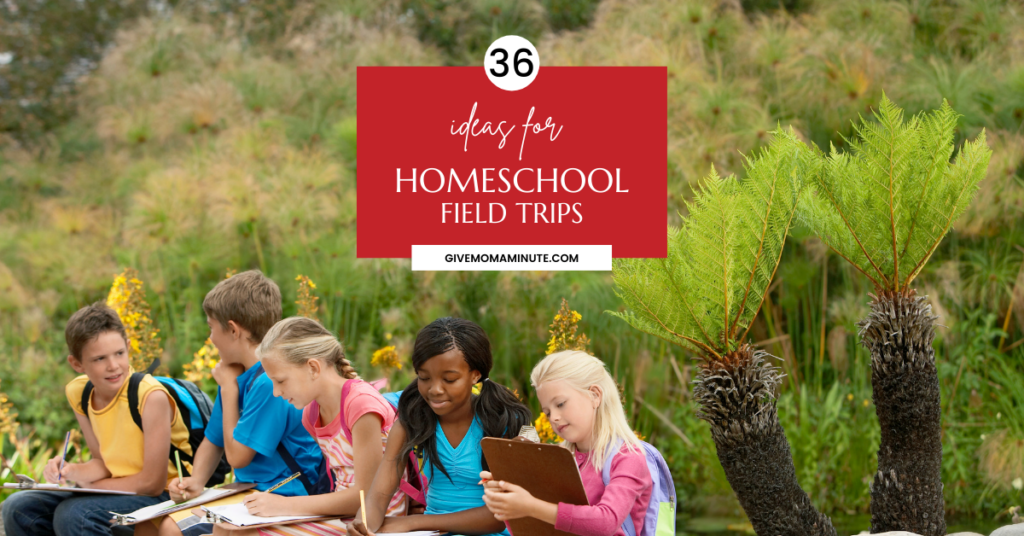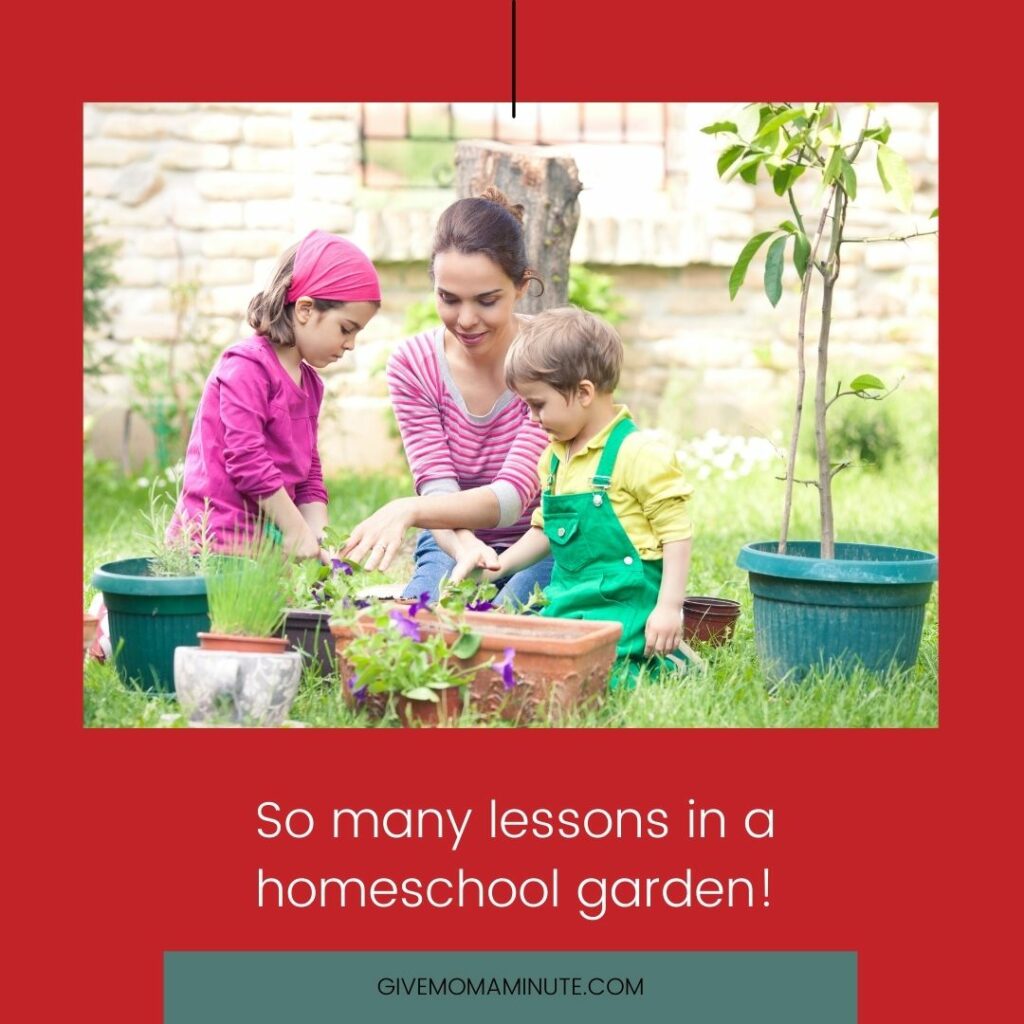One of the biggest advantages to homeschooling is that you can really cater what you’re learning to each individual child. If you’re just learning How to Homeschool Multiple Ages, though, the flexibility and all the choices can actually be overwhelming. In this post, I’ll give you some tips and things I wish I would have done differently in our secular homeschool.
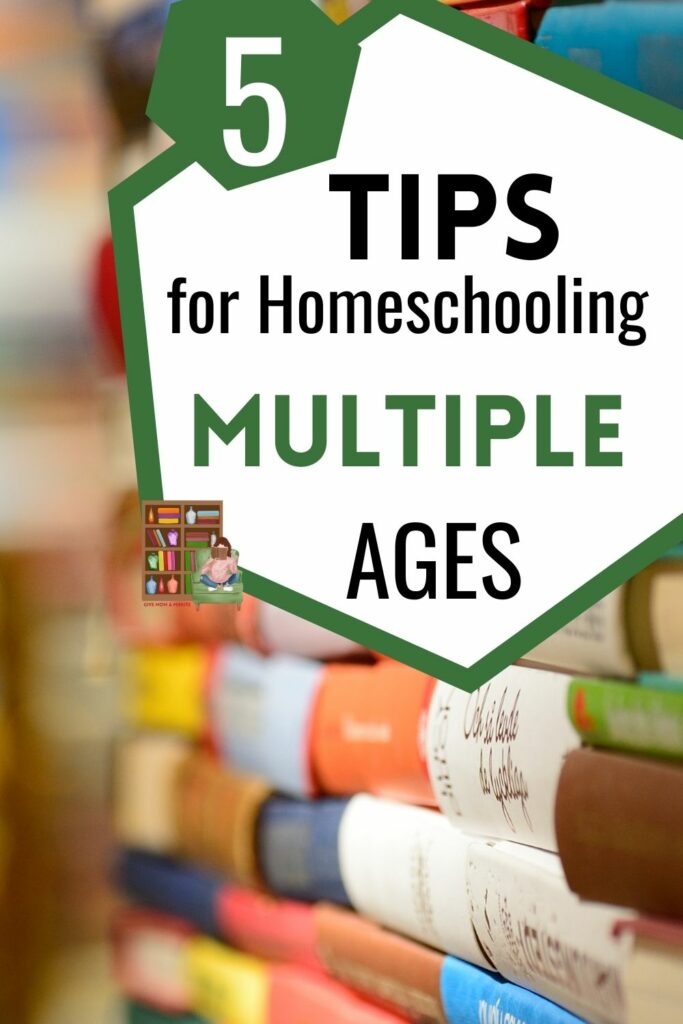
How to Homeschool Multiple Ages
In our beginning homeschool years, friends’ eyes would open wide when I told them I taught my 4 kids 4 different levels of curricula and kept everything 100% separate. This is one strategy when working out a homeschool routine with a large family.
The other strategy is to combine your kids for all or at least some subjects. I think this is probably the most common method, just anecdotally speaking. Like all things homeschool, it will depend on your own family routine and schedules to see what works best for you.
I have tried both these strategies now and I’ll tell you what I loved and didn’t love about both! It’s a journey learning how to homeschool multiple ages, for sure!
Tips for Homeschooling Multiple Kids on Different Levels
This is what we did for the first several years of our homeschool life. When my son started, he was 5 and I had 3 little toddlers ages 3, 2 and 1. At those ages, I was not doing anything structured with the babies but only focused on my oldest.
As the other kids got older, I added them in to our homeschool routine, 1 kid and 1 level at a time. It took me a couple of years to discover Build Your Library but once I did, that is the primary curriculum we used.
What Worked Well With Everyone on Different Levels
With kids close in age and a busy household, my kids didn’t get a lot of alone time with mama. I enjoyed having them on individual levels because then we had some 1:1 time and they had my full attention while they were doing their school work.
The other thing that worked well with keeping them on their own routines is that they were really free to move at their own pace. If they wanted to do a deep dive into something we could take the extra time. If they needed to skip a topic or book, we were free to do that.
Hindsight is 20/20. . .
With the advantage of hindsight, I wish I would have scrapped a subject or 2 or maybe combined them for some things and just spent more time actually playing and creating. I wish that individual time I spent with them making sure they were moving through the curriculum had been spent making memories. Oh, mamas, if I could go back to those sweet chubby hands and slobbery kisses…..
Don’t miss those early years. Don’t rush through them. So much learning happens when you don’t even realize it when they are small. If I could go back I would focus on Reading, Writing and Math and spend a lot more time playing and developing creativity.
Regarding the schedule itself, it worked for us. With 4 young ones there was always a disruption so having them on separate levels allowed us even greater flexibility. Sometimes one kid’s curriculum would get pushed off to the next day if too many things came up. But we always caught up eventually.

Tips for Homeschooling by Combining Kids
A couple years ago I started experimenting with combining some of the science levels and then ultimately I ended up combining my kids for almost all of their subjects. Some things worked well and in some ways it really didn’t. In general, homeschooling together was more fun as the kids developed a lot of jokes and had good conversations all together. We made a lot of memories this way. I think a lot of homeschoolers are figuring out how to homeschool multiple ages and choose to combine kids for at least some subjects.
What Worked Combining Kids Together in Homeschool . . .
When I was homeschooling the kids on all different levels, they were all listening to each others’ topics and books anyway. So really they were all getting way more education than they needed! 😉 This was especially true for science. My kids all love science so even though I tried to keep them on separate levels, they always wanted to join in everything else.
When we combined levels for science it was fun as they loved doing the labs together and seeing how they could come up with different solutions.
This last year we did a year of Geography and tour of the world which led to lots of really great conversations, deep dives and projects. The kids enjoyed reading books together and role-playing.
They also thoroughly enjoyed ganging up on their mother whenever she made a mistake! My kids are a little competitive with each other so having them together motivated them to work a bit harder. The youngers wanted to keep up with their big brother’s map skills so they focused much more than they would have if they had been on their own.
. . . And What Didn’t
The biggest challenge I had when combining my kids in our homeschool was the routine. I have a son who likes to sleep late (never wake a sleeping baby!), one daughter who likes to always do math first, etc. It took us a long time in the day to all be ready to sit down together and be on the same page.
The other challenge I had is the significant knowledge gap between my oldest and my youngest. My oldest is a very black and white thinker and interested in politics, geography and cultures. He also knows a lot about science. When we would have those great discussions mentioned above, it was easy for my other kids to just let older brother do all the answering. Or older brother would get annoyed that he had to do “babyish” stuff to get the girls on the same page.
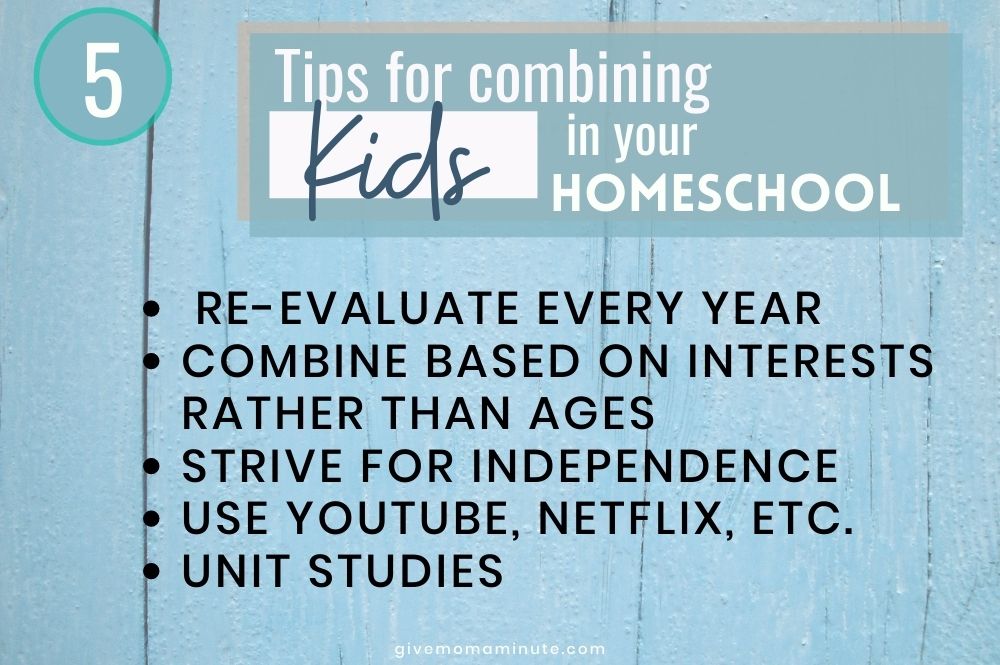
How to Homeschool Multiple Ages: Final Tips
Taking into consideration everything we have done and learned and combinations we have tried, here are my best tips when homeschooling multiple kids and multiple ages.
- Re-evaluate every year. Maybe this year it works best to combine 2 kids for science and leave the others separate. Or maybe you combine just a couple of kids and leave the older one to do his own thing. Just because you start combining one subject or pairs of kids does not mean you are locked into that forever. Switch it up!
- Combine kids based on interests rather than ages. This is really for those of us with kids close in age. If you have a wider age gap, this tip might not hold up as well. In hindsight, I wish I had combined kids according to their interests. They all loved science so they could have stayed all together there. I have 2 kids who really love art and crafty, project-based learning. I wish I had let them be together for history and geography as they would have gone ALL In.
- Strive for Independence. My kids have always had their own math and handwriting levels. These are things they can mostly do indpendently after a brief explanation. All of my kids are great readers so I wish I had just let them read independently even if it was the same book. As they get older they can do more things on their own to avoid the scheduling snafus I mentioned above.
- Use YouTube, Netflix, etc. When we finally found our groove this year, it was because I decided to scrap the geography books we were “supposed” to be using. It was hard to share 1 book between 4 kids and they all enjoy documentaries. So I used our curriculum as a rough outline and then developed Unit Studies using YouTube and other streaming services. This was a great way to involve their dad, too, as he would watch the documentaries with us in the evening.
- Unit Studies Are Great for Family-Schooling. I’ve always used a full curriculum but when I decided to combine the kids for almost everything, we discovered unit studies worked well. Several unit studies are 4-6 weeks long so we could deep dive into one topic. Even if 1 kid wasn’t that into it – they would go along because they knew they would be picking the next unit study. (For science, we LOVED this site from the University of Colorado!)
As my big sister always says, there’s no wrong way to do homeschool. Try it, and if it isn’t working, change it up. That is the beauty of homeschool. When you have a houseful of kids and trying to find the perfect homeschool routine, it really can be a trial and error process.
I hope some of the tips above for how to homeschool multiple ages will help you think through what will work best in your family. All in all, if I had to do it over again, I would definitely start combining earlier than I did – but the exact combinations probably would have changed every year.
What do you think? If you have tips to add or questions let me know. I’d love to help you find a solution for your family.

